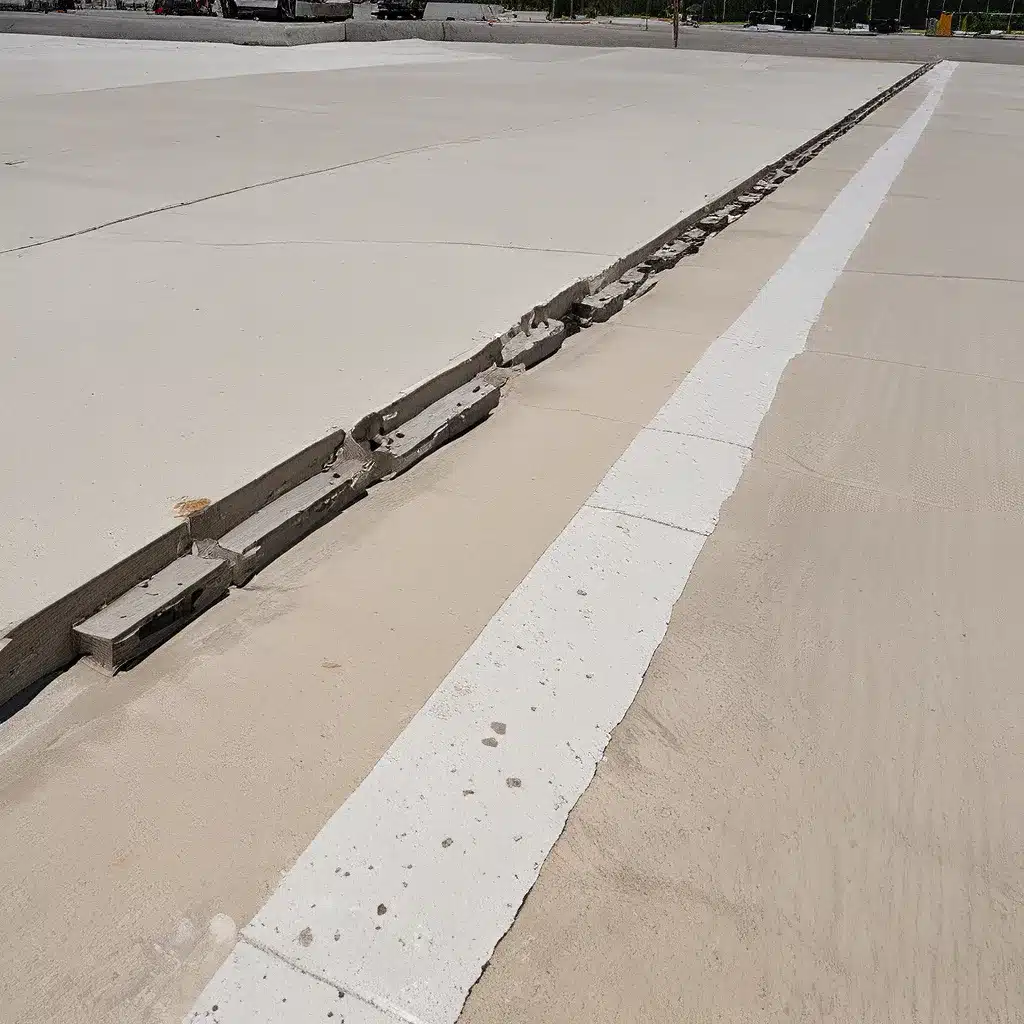
Have you ever been out for a pleasant stroll, only to suddenly find yourself stumbling over a raised concrete slab? Or perhaps you’ve been driving along, feeling the thud of your tires as they hit those pesky expansion joints in the pavement? Well, my friends, let me tell you – those seemingly innocuous gaps in the concrete can be a real headache if not properly managed.
Understanding the Purpose of Expansion Joints
As a concrete enthusiast, I’ve come to appreciate the crucial role that expansion joints play in maintaining the structural integrity of our built environment. These strategic gaps in the concrete serve a vital purpose – they allow the material to expand and contract with changes in temperature, preventing cracks and other unsightly (not to mention dangerous) damage.
Imagine your concrete surface as a vast, rigid sheet, with no room to breathe. As the temperature rises and falls, that sheet would be forced to bend and twist, ultimately leading to its demise. But by incorporating strategically placed expansion joints, we create a network of flexible connections that enable the concrete to move and flex, preserving its longevity and ensuring a smooth, uninterrupted surface.
The Challenges of Expansion Joint Maintenance
Now, you might be thinking, “Well, that all sounds great, but what’s the catch?” Ah, my eager learner, there’s always a catch, isn’t there? While expansion joints are essential, they can also be a real pain to maintain, especially in high-traffic areas like parking garages, walkways, and busy roads.
Research from the Texas A&M Transportation Institute highlights the common issues that can arise with expansion joints, such as:
- Uneven settlement: As the ground shifts and settles, the opposing concrete slabs can become misaligned, creating tripping hazards and a bumpy ride.
- Deterioration: Exposure to the elements, as well as heavy traffic, can cause the joint sealant to degrade over time, allowing moisture and debris to infiltrate.
- Cracking and spalling: When the expansion joint can no longer accommodate the movement of the concrete, it can lead to cracks, chips, and other unsightly damage.
Imagine trying to navigate a parking garage where every few feet, you feel like you’re going to lose a tire or twist an ankle. It’s enough to make even the most seasoned driver or pedestrian cringe, am I right?
Choosing the Right Expansion Joint Solution
Okay, so expansion joints are a necessary evil, but what can be done to mitigate these challenges? Well, my friends, the key lies in selecting the appropriate expansion joint system for your specific needs. And let me tell you, there are quite a few options out there, each with its own unique set of benefits and drawbacks.
According to the Federal Highway Administration, some of the most common expansion joint solutions include:
- Preformed expansion joints: These are factory-made, prefabricated systems that can be easily installed, often with a slip-resistant surface to prevent tripping.
- Poured sealants: Liquid sealants that are poured directly into the joint opening and allowed to cure, creating a flexible, watertight seal.
- Compression seals: Rubber or foam seals that are compressed into the joint, expanding to fill the gap and prevent the ingress of water and debris.
Each of these options has its own strengths and weaknesses, and the choice often comes down to factors like the expected level of movement, the desired aesthetic, and the overall budget for the project. The key is to work with a reputable concrete services provider who can assess your unique needs and recommend the best solution.
Ensuring a Smooth Transition with EMSEAL
Now, if you’re anything like me, you’re probably wondering, “Okay, but how do I know I’m getting the best possible solution?” Well, let me tell you about a company that’s been making waves in the world of expansion joint management: EMSEAL.
EMSEAL’s SafetyFlex SFP hinged expansion joint cover is a shining example of the kind of innovative and practical solutions that are out there. This system features a rubber-encapsulated, hinged metal plate that can flex and move with the concrete, providing a smooth, slip-resistant surface for pedestrians and vehicles alike.
But the best part? EMSEAL has an extensive project reference list that showcases their work in a wide range of high-traffic areas, from parking garages to sports stadiums. That means you can have confidence that their solutions have been tested and proven to stand the test of time.
Bringing It All Together
So, there you have it – a deep dive into the world of concrete expansion joints, where the seemingly simple gap can become a complex web of challenges and solutions. But fear not, my friends, for with the right knowledge and the right partners, you can ensure a smooth transition, both literally and figuratively.
Whether you’re a homeowner dealing with cracked sidewalks, a business owner managing a parking garage, or a city planner tasked with maintaining vital infrastructure, understanding the importance of expansion joints and choosing the right solution is key to keeping your concrete surfaces in top-notch condition.
And who knows, maybe the next time you’re out for a stroll or a drive, you’ll feel a newfound appreciation for those unsung heroes of the concrete world – the expansion joints that keep everything moving (or not moving, as the case may be) in perfect harmony.
Remember, you can find more information about concrete services and solutions at https://www.concretertownsville.com/. Happy concreting, my friends!

